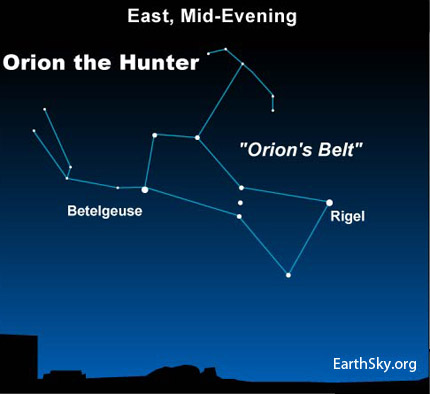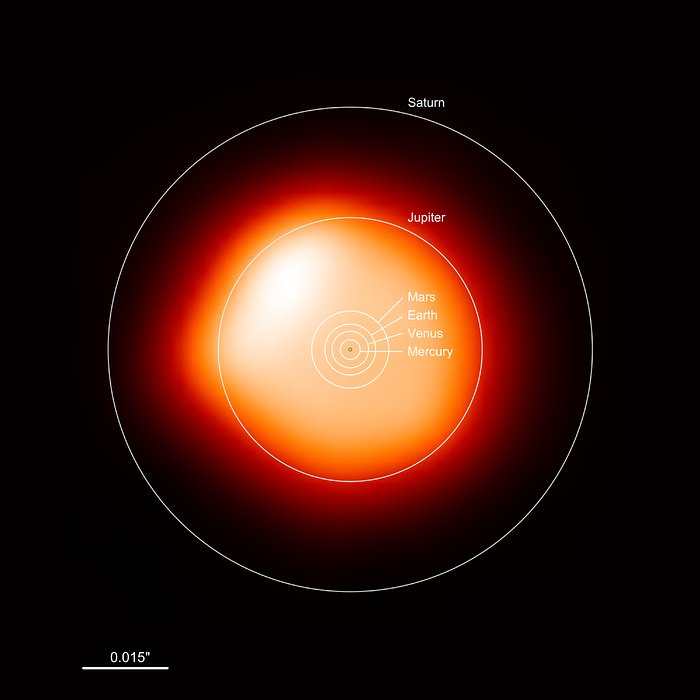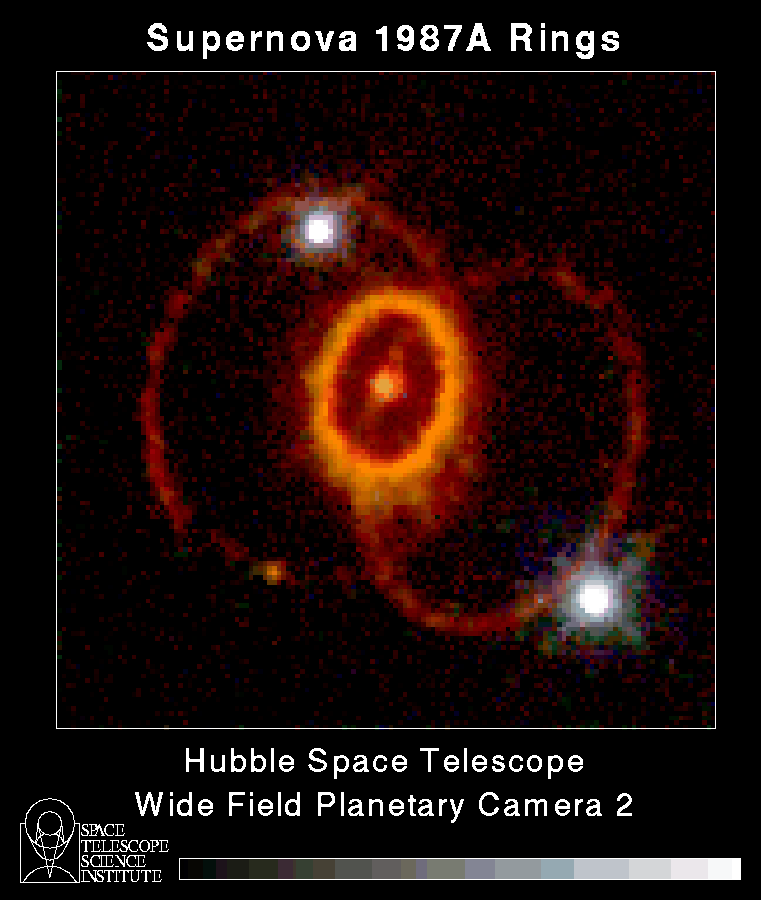One of the most familiar stars in the night sky is Betelgeuse, the star that marks the right shoulder of Orion the hunter. (Right shoulder, that means we see it on the hunter’s left!). Generally Betelgeuse is the eleventh brightest star in the sky but because there are several other very bright stars nearby Betelgeuse is very easy to find. Not only is Rigel, Orion’s left foot, slightly brighter but to Betelgeuse’s upper right is Aldebaran the eye of Taurus the Bull while to the lower left is the brightest of all true stars Sirius. I my opinion these stars together make Orion and the region around it one of the most interesting parts of the night sky, and the simplest to find.

Lately however Betelgeuse has not been looking as strong and bright as usual. Astronomers have known for centuries that Betelgeuse varies in its intensity by as much as a factor of two but for the past month the star’s energy output has been the lowest it’s been for over a hundred years.

So what’s happening to Betelgeuse? Could its recent convulsions be a prelude to something extraordinary, perhaps even the star’s soon exploding as a supernova?

It’s worth considering; our current theories about Type 2 supernovas tell us that Betelgeuse is a prime candidate. Only very heavy stars that have used up all of their nuclear fuel end their lives as type 2 supernovas. At an estimated mass of twelve times that of our own Sun and with a bloated red sphere as large as the orbit of Jupiter indicating that both its hydrogen and helium resources are gone Betelgeuse seems to be ready to go at any time.

Of course at any time for an object as long lived as a star could mean sometime in the next million years or more. However a recent paper has suggested that Betelgeuse’s end might come any time in the next 100,000 years so there is a slight chance it could be happening soon.
So what would Betelgeuse going supernova mean to us here on Earth? Would there be any danger? Well at an estimated distance of 700 light years Betelgeuse is too far away for its burst of radiation, mostly gamma and X-rays, to do any damage to our atmosphere. However since the total amount of light coming from Betelgeuse could be as much as that of a full Moon, all squeezed into a single point of light in the sky, that point would be intensely bright, easily seen in daytime. It is possible that anyone staring at that point for too long could suffer some eye damage. Still, all in all there’s no reason to get too excited, but a nearby supernova would be something to see.

Especially for astronomers, over the last century there have been hundreds of observations of supernova in other galaxies but those are so far away that precise measurements of what is happening are difficult to make. Even worse, when a star goes supernova in another galaxy astronomers almost never have any observations of the star before it went nova.
Only once, back in 1987 when a star in the Large Magellanic Cloud, a satellite galaxy to our Milky Way, went supernova have astronomers had any observations of a star before it exploded. The last star to go supernova in our own Milky Way galaxy was way back 1604 when telescopes were nothing more than cardboard tubes with a lens at each end. If Betelgeuse or another nearby, well-known star were to explode it would allow astronomers to test many of their theories about supernovas and star evolution in general.

Personally I’ve been hoping to see a naked eye supernova most of my life so I’ll be keeping my fingers crossed the next few months. You know, writing this post about the possibility of Betelgeuse going supernova has made me realize that I ought to write a post just about supernova. After all type 1 supernova are an entirely different kind of animal from type 2 so I ought to describe them. Maybe I’ll do so here in the next few months, so keep coming back.

Hello! I culd have sworn I’ve been to this site before but after browsing
through some of the post I realized it’s new to me.
Anyways, I’m definitely delighted I found it and I’ll be bookmarking and checking back
frequently! https://sport-rap.mystrikingly.com/
Thanks for the comment and be sure to tell all your friends!
Bob L
Wow, that’s what I was seeking for, what a data! present here at this webpage, thanks
admin of this web page. https://goalkeepers.mystrikingly.com/
Thanks for the comment and come back soon!
Bob L
Since the admin of this web page iss working, no doubt very rapidly itt will be famous, due to its feature contents. https://topnrl.wordpress.com/
Thanks for the comment and how are things going there in Australia?
Bob L
I’m amazed, I must say. Rarely do I encounter a blog that’s both equally educative and engaging, and without a doubt, you have hit the nail on the head.
The issue is something not enough men annd women are speaking intelligently
about. Noow i’m very happy I came across this during my hunt for something concerning this. https://benfica380.wordpress.com/
Thanks for the comment and come back soon!
Bob L
I know this if off topic but I’m loooking into starting my own weblog
and was curiokus what all is needed to get setup? I’m assuming having a
blog like yours would cost a pretty penny? I’m not very web smarft so
I’m not 100% certain. Anyy suggestions or advice would
be greatly appreciated. Cheers https://richgamers.mystrikingly.com/
Thanks for the comment. If you’re thinking about starting a blog go to wordpress, that’s how I started. Good Luck
Bob L
Everyone loves hat youu guys are up too. Thhis sort of clever work and reporting!
Keep up the wonderful works guys I’ve included you guys to my
personal blogroll. https://caramellaapp.com/milanmu1/twe0F1hnY/future-of-the-nfl
Thanks for the comment and tell all of your friends!
Bob L
What’s up, after reading this awesome paragraph i amm too glad to share my
experience here with colleagues. https://predictedlineup3.wordpress.com/
Thanks for the comment and come back soon!
Bob L
Awesome! Its genuinely remarkable post, I have got much clear idea concerning from this paragraph. https://www.solulab.com/what-does-nft-mean-for-digital-artists/
Thanks for the Comment and come back soon!
Bob L